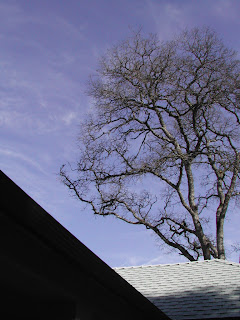 The are twenty species (30 varieties) of oak in California ranging from the coast through the central valley and into the Sierra Nevada. The Indians used the acorn as a primary food source and the white man used its wood for building and fire. It wasn't until recently that the oak as been valued/recognized for their ecological, economic, scientific, and aesthetic value. Like the rocks in the great Sierra Nevada Range these noble trees were taken for grant by the immigrants; perhaps because they are so plentiful or because there are similar to the trees of their native lands.
The are twenty species (30 varieties) of oak in California ranging from the coast through the central valley and into the Sierra Nevada. The Indians used the acorn as a primary food source and the white man used its wood for building and fire. It wasn't until recently that the oak as been valued/recognized for their ecological, economic, scientific, and aesthetic value. Like the rocks in the great Sierra Nevada Range these noble trees were taken for grant by the immigrants; perhaps because they are so plentiful or because there are similar to the trees of their native lands.
The library has a nice book called Oaks of California
The California tree oaks have a great deal of diversity. They adapt to micro climates well changing leaf morphology, photosynthesis capability, drought resistance strategies, size and structure (limb configuration). These are not genetic traits that are passed on through acorns but environmental adaptations. This variability makes taxonomic classification difficult with out taking the environment into account.
The neighbors have a large oak that occupies the southeast corner of our house.
In walking the neighborhood I noticed that some of the oak trees have lost their leaves and some have not. The blue oak is a drought-deciduous tree, meaning that it looses its leaves by late summer when there are drought conditions. The trees that still have their leaves are invariably in the middle of rich green well watered lawns. Remember the comment from the Landscape Design Class instructors (top of this blog entry), I guess we will know for sure if we are over watering by the blueish-green foliage next Christmas.
The following photograph illustrates how the neighborhood got its name, The Woodlands; the name of the development project in which we live. Turns out it is both accurate and apropos of the landscape. Note that the tree that lives on the green lawn has it's leaves.
I believe we have a blue oak (Quercus douglasii) based on the key to the tree oaks of California published in the afore mentioned book.
Here is a satellite photo of the area taken before the road was cut and the trees cleared.

Blue Oak Habitat
The habitat traits of the blue oak that are applicable to Auburn are; found in the foothills bordering hot interior valleys, annual rain fall between 15-35 inches, soil not well developed, and below 3,500 feet in elevation.Blue Oak Distribution
The blue oak is found only in California where it is widely distribute to 39 of the 58 counties. It is the landmark species of the foothills in the Sierra Nevada range. Disjunct populations occur on the Sutter Buttes in the middle of the Sacramento Valley.
Field Trips
- US Davis Arburitium (oak tree collection)
- Indian Grinding Rock State Historical Park (Miwok Indians) acorn usage
Associated Hardwoods and Conifers
- madrone
- bay laurel
- incense cedar
- Douglas fir
- ponderosa pine
- gray pine
Glossary
- Overstory―The uppermost layer of foliage and branches in a piece of vegetation; the highest canopy.
- Savanna―A grassland with scattered trees as a sparse overstory. The tree canopies do not cover more than 30% of the ground surface.
- Snags―Trees that are dead but standing.
- Woodland―An open, tree-dominated vegetation with more tree cover than a savanna but less than a forest. Tree canopies contribute more than 30% cover but seldom overlap.


No comments:
Post a Comment